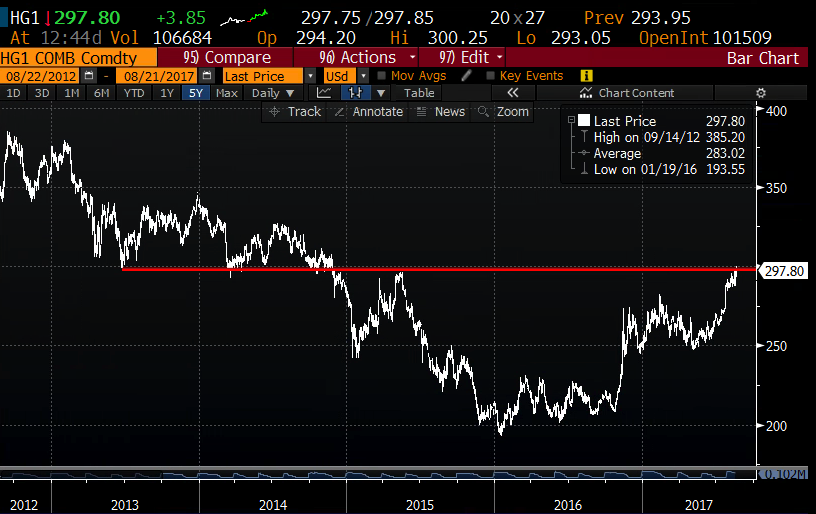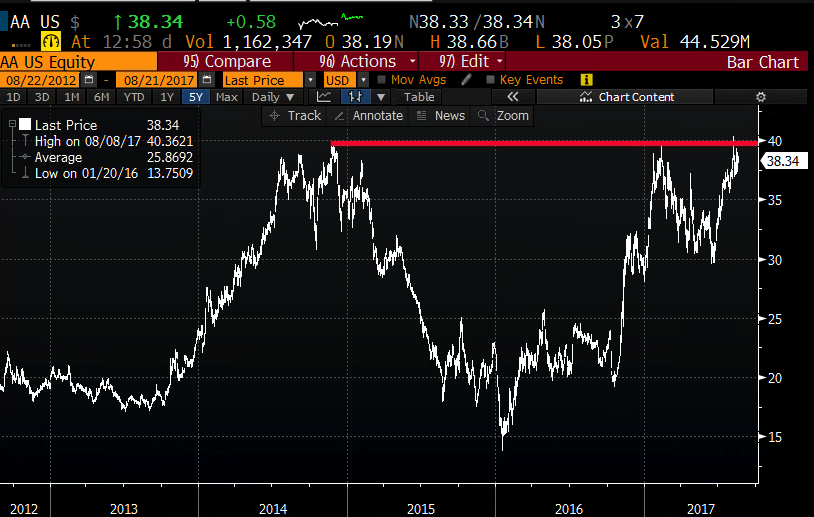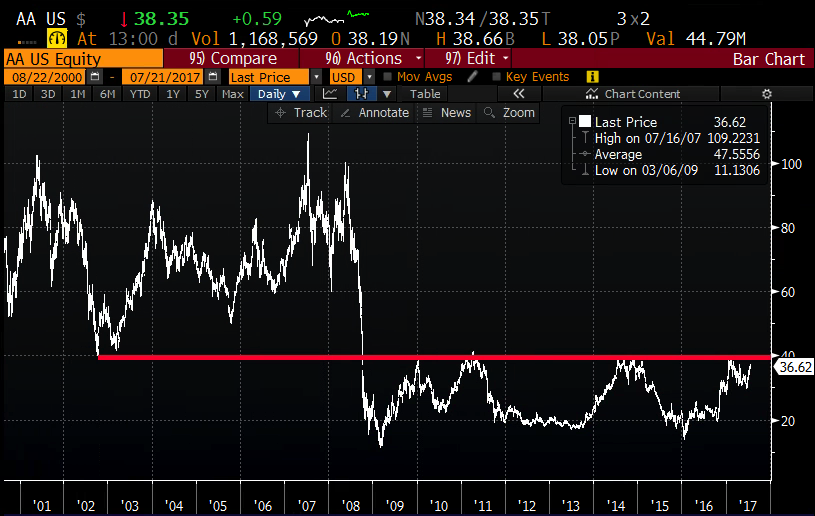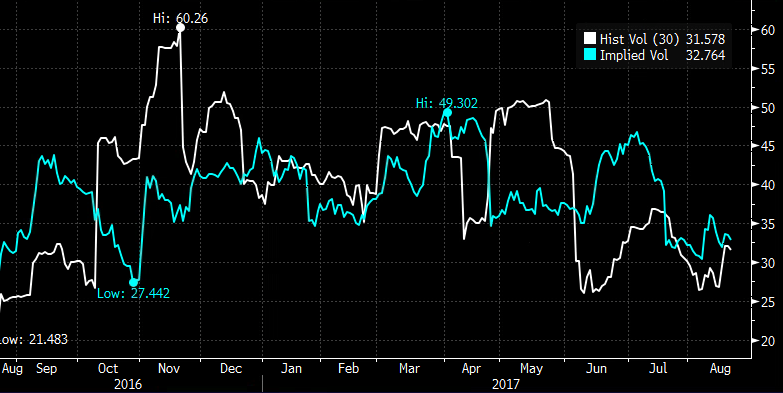Copper is trading at levels it has not seen since May 2015, up more than 50% from its 2016 lows, which at the time were seven-year lows:

Investors keep an eye on industrial commodity prices like that of copper, as the WSJ put it this am (Booming Metals Rally Signals Optimism on Global Growth):
Driving the gains are expectations that this year’s nascent rebound in global growth will continue, with major economies around the world shiftin g into higher gear after a long period of lackluster performance. Many investors are also betting that reduced supplies and a selloff in the dollar will continue boosting prices, which had fallen in recent years alongside other commodities as new producers saturated markets.
……
Global investors view demand for base metals as an important gauge of economic health, as they are the building blocks of construction and used to make everything from airplanes to smartphones. A continued rise in metals prices could help push up inflation in the U.S. and abroad, giving central banks a freer hand to raise rates or taper the massive monetary policy programs they have employed to kick-start growth in the aftermath of the financial crisis.
While traders have dubbed copper, Dr. Copper, signaling its importance as a sort of “tell” for global growth, that would make Aluminum, Copper’s industrial commodity “resident”. Aluminum is also trading at multi-year highs and shares of Alcoa (AA) have responded accordingly, with the stock uo 36% of the year, now threatening a breakout at two-year technical resistance:

Taking a longer time horizon back to the year 2000, and the AA chart quickly becomes to my eye one of the most interesting charts in the world, once again approaching massive technical resistance at $40, its 2002/2003 double low, its 2008 break down, which accelerated what was a 90% peak to trough decline from its 2007 highs to its 2009 lows, and four more attempts to breakout. Will this time be different?

If you were inclined to play stocks like AA from the long side as a sort of accelerating global growth proxy, you might consider defined risk strategies. The first reason for this is that the stock has failed on four occasions yielding declines of 30 to 50% in the coming year in all instances since early 2010. The second reason is that options prices are cheap on a relative basis, with 30 day at the money implied volatility (blue line below) vs realized volatility (white line below, how much the stock has been moving):

The next identifiable catalysts for AA will be their Q3 results on Oct 18th. Call spreads look ok (depending on one’s conviction), for instance, the Oct 40/45 call spread can be bought for $1.25 (vs $38.40), a little less than a quarter of the width of the spread, but beaks-even up 7.5% at 41.25. But its important to make a distinction between cheap vol and relatively cheap vol. On an absolute basis, while 30 day at the money implied volatility is very near its 2017 lows, we have a VIX at 13% with AA 30 day near 33%.
One way to take advantage of high short dated options prices in a directional manner would be calendars. For instance with the stock at $38.40 you could….
AA ($38.40) Buy Sept / Oct 40 call calendar for $1
- Selling to open 1 Sept 40 call at 65 cents
- Buying to open 1 Oct 40 call for 1.65
Break-even on Oct expiration:
If the stock is 40 or lower on Sept expiration the Sept 40 call will expire worthless. This is the best case scenario, right near $40 where the Oct 40 calls will pick up deltas, hopefully offsetting decay. $1 is he max loss on a dramatic view above or below $40.
Rationale: The calendar offers a bit more optionality than Oct call spreads, If the stock were to rise towards $40 before Sept expiration then you could close the Sept call and roll to a higher strike call in Oct and turn into a vertical call spread and further reduce the premium at risk. It defines risk to 1.00 vs 1.25 on the Call Spread which isn’t alot but offers a few more ways to win. The Call Spread is outright bullish for a breakout above resistance, the call calendar is less outright bullish and targets 40 near term, with a breakout later with it’s October call set for earnings.